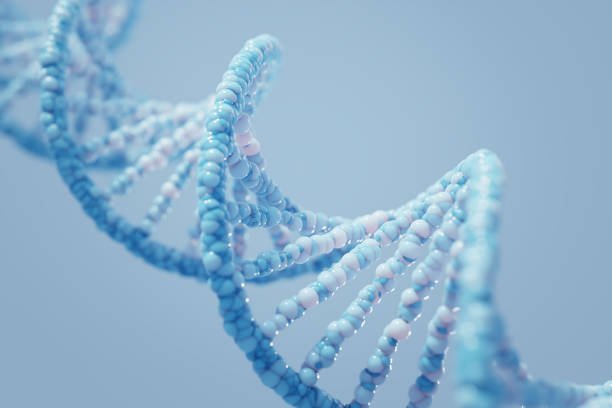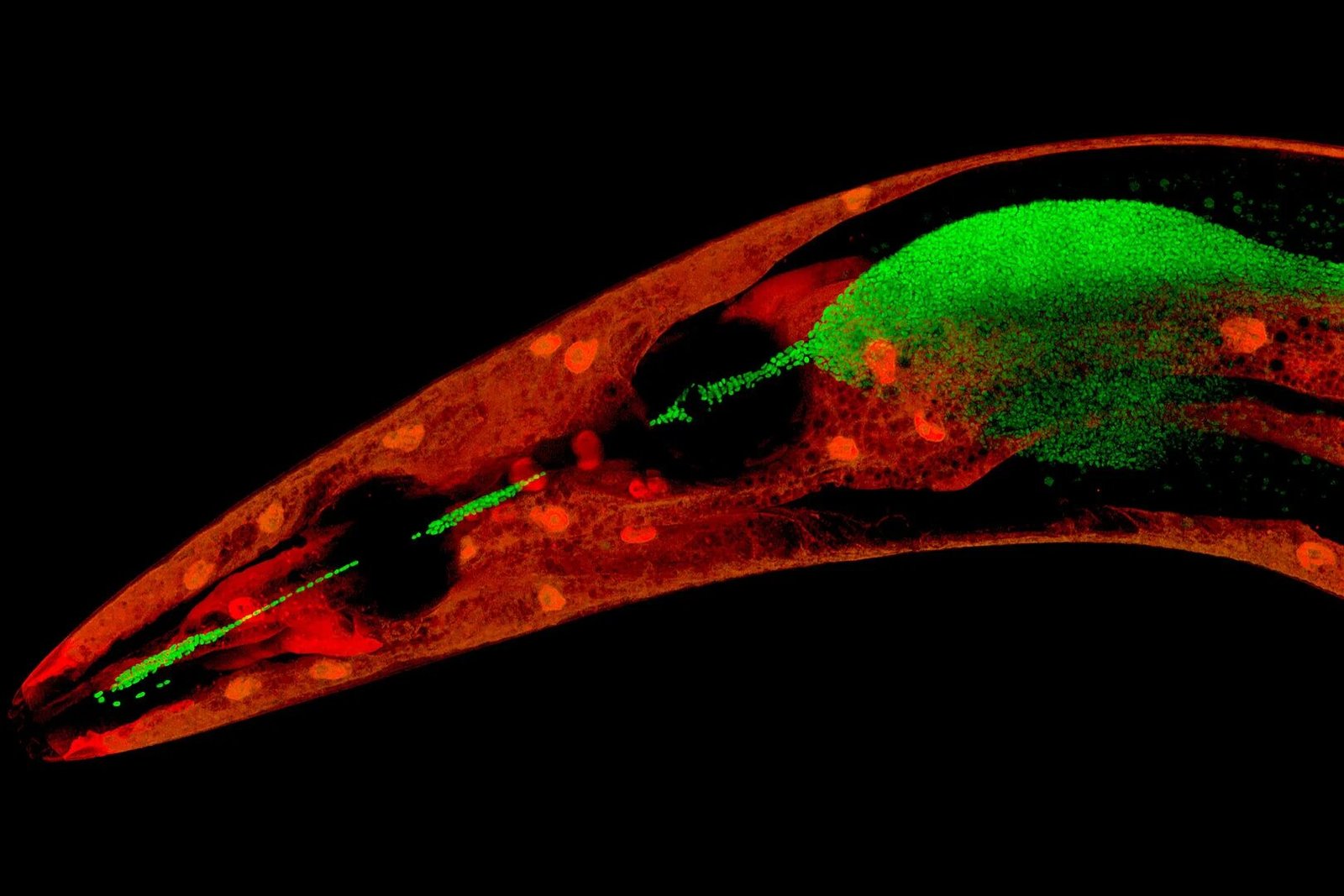Happiness is often seen as a deeply personal and subjective experience, shaped by life circumstances, social connections, and individual outlooks. It’s the spark that brightens our days, the elusive pursuit that many spend their lives chasing. But what if the key to happiness isn’t just about our environment or mindset? Could it be that our genes—those tiny blueprints of life—play a significant role in shaping how we feel, think, and experience joy?
This question, often posed by scientists and philosophers alike, dives into a complex interplay between nature and nurture. Over recent decades, research into the genetics of happiness has revealed some surprising insights, suggesting that biology may influence our emotional well-being more than we ever imagined. The prospect that happiness could be, in part, a biological trait has opened new doors for understanding mental health, emotional resilience, and the pursuit of joy itself.
In this article, we’ll explore the science behind the genetics of happiness, uncover how specific genes might influence our ability to feel good, and delve into how environmental factors and lifestyle choices interact with our biological makeup to shape our overall sense of well-being. By the end of this exploration, we’ll have a deeper understanding of how much of our happiness is determined by the genetic cards we’re dealt, and how much is in our control.
The Genetic Basis of Happiness: An Introduction
The idea that genetics could influence happiness might sound counterintuitive. After all, happiness is such a fleeting and personal emotion that it seems disconnected from something as immutable as our DNA. But recent studies suggest that genetics do, in fact, play a role in determining our baseline level of happiness, which can be thought of as a set point or range within which we tend to fluctuate.
This genetic influence on happiness is largely tied to the way our brains are wired to process emotions. Our emotional experiences are regulated by a complex network of neurotransmitters and brain circuits, which are, in turn, shaped by the genes we inherit from our parents. The process is highly intricate, involving the interaction of multiple genes that influence everything from our capacity for positive emotions to our responses to stress and adversity.
The Happiness Set Point Theory
Before diving into the specific genes involved, it’s essential to understand the concept of the “happiness set point.” This term, popularized by psychologist and researcher Sonja Lyubomirsky, refers to the idea that each person has a baseline level of happiness, determined in part by genetic factors. According to this theory, about 50% of our happiness is genetically determined, while the remaining 50% is influenced by external factors, such as life circumstances, relationships, and personal choices.
The happiness set point theory suggests that while life events—both positive and negative—can temporarily shift our level of happiness, we tend to return to our baseline after a period of time. For example, after winning the lottery, someone might feel elated for a few months but eventually return to their pre-win happiness level. Similarly, after experiencing a traumatic event, someone may feel down for a while, but their happiness will eventually rebound to its natural set point.
This concept of a happiness set point is supported by twin studies, which compare identical twins (who share 100% of their genes) with fraternal twins (who share 50% of their genes). These studies have shown that identical twins tend to report similar levels of happiness, even if they were raised in different environments. This suggests that genetics play a significant role in determining how happy we are, regardless of our life circumstances.
The Role of Neurotransmitters
Our brains rely on chemicals known as neurotransmitters to regulate mood, motivation, and emotional responses. These chemicals play a crucial role in the experience of happiness, as they help our brain cells communicate with each other. Among the most well-known neurotransmitters associated with happiness are serotonin, dopamine, and oxytocin.
- Serotonin: Often referred to as the “feel-good” neurotransmitter, serotonin is involved in regulating mood, sleep, appetite, and emotional stability. Low levels of serotonin are linked to feelings of sadness and depression. Interestingly, some genetic variations can influence the production and function of serotonin, affecting how well our brain regulates mood. For example, certain gene variants can make individuals more or less susceptible to depression, depending on how efficiently their brains process serotonin.
- Dopamine: Dopamine is often called the “reward” neurotransmitter because it is released during pleasurable activities such as eating, exercising, and socializing. Dopamine is closely tied to motivation, reward processing, and the pursuit of happiness. People with certain genetic variations related to dopamine receptor genes (such as the DRD2 gene) may experience more intense feelings of pleasure and reward, which can contribute to a greater sense of happiness. On the other hand, genetic mutations or variations that affect dopamine receptors may make it harder for some individuals to experience pleasure from everyday activities, potentially contributing to a higher risk of depression or anhedonia (the inability to feel pleasure).
- Oxytocin: Known as the “love hormone,” oxytocin plays a key role in social bonding, trust, and feelings of connectedness. It’s released during positive social interactions, such as hugging or spending time with loved ones, and is thought to promote a sense of emotional well-being. The release of oxytocin is often linked to feelings of happiness, particularly in the context of close relationships. Genetic factors that influence the production and sensitivity of oxytocin receptors may therefore play a role in how happy and connected an individual feels in social situations.
Key Genes Involved in Happiness
Several genes have been implicated in the regulation of happiness and mood. While the genetic underpinnings of happiness are still being explored, research has identified a few key genes that appear to play a role in our emotional well-being.
- 5-HTTLPR Gene (Serotonin Transporter Gene): One of the most studied genes in relation to happiness is the 5-HTTLPR gene, which regulates the transport of serotonin in the brain. The gene comes in two variants: the “long” (L) allele and the “short” (S) allele. Research has shown that people with two copies of the long allele tend to have higher levels of serotonin and are more resilient to stress, which may contribute to a greater overall sense of well-being. On the other hand, individuals with two copies of the short allele may have lower serotonin levels and be more vulnerable to depression and anxiety, making it harder for them to experience long-term happiness.
- BDNF Gene (Brain-Derived Neurotrophic Factor): BDNF is a protein that plays a key role in the growth and survival of neurons. It is involved in the brain’s ability to adapt to new experiences, learn, and form memories. Research has shown that individuals with certain genetic variants of the BDNF gene may have a greater capacity for emotional resilience, which could contribute to a higher baseline level of happiness. BDNF has also been linked to neuroplasticity, the brain’s ability to change and reorganize itself in response to experience. This suggests that genetic variations in BDNF may not only influence baseline happiness but also the ability to adapt and find happiness in different life circumstances.
- COMT Gene (Catechol-O-Methyltransferase): The COMT gene is involved in the breakdown of dopamine, a neurotransmitter crucial for mood regulation and reward processing. Variants of the COMT gene affect how efficiently dopamine is metabolized in the brain, with some variants linked to higher levels of dopamine and others linked to lower levels. People with a specific variant of the COMT gene may have heightened sensitivity to rewards and positive emotions, contributing to greater feelings of happiness. However, this can also make them more vulnerable to stress and anxiety in high-pressure situations.
- OXTR Gene (Oxytocin Receptor Gene): As mentioned earlier, oxytocin is often referred to as the “love hormone,” and its role in happiness is well-documented. The OXTR gene governs the receptors that bind to oxytocin in the brain. Some research suggests that variations in the OXTR gene may influence how sensitive individuals are to oxytocin, with those carrying certain variants being more likely to experience positive emotions and greater happiness in response to social bonding and supportive relationships.
The Interaction Between Genes and Environment
While genetics play a significant role in shaping our baseline level of happiness, it is important to recognize that the environment also has a profound impact. The nature versus nurture debate is particularly relevant when it comes to happiness, as our genes do not operate in isolation. Instead, they interact with environmental factors, including life experiences, relationships, and cultural influences, to shape our emotional well-being.
For example, while someone with a genetic predisposition to higher serotonin levels might have an easier time maintaining happiness, they may still face challenges if they experience chronic stress or traumatic events. Conversely, someone with a genetic predisposition to lower serotonin levels may find that positive life experiences, such as supportive relationships or engaging in activities that promote well-being, can help them improve their mood and emotional health.
Research has also shown that interventions such as mindfulness meditation, exercise, and therapy can have a positive impact on happiness, even for those with genetic variants that make them more prone to negative emotions. This suggests that while our genetic makeup provides a foundation for happiness, we still have the ability to shape our emotional experiences through the choices we make and the environments we cultivate.
The Epigenetics of Happiness: How Our Genes Respond to Life
Epigenetics is the study of how environmental factors can influence the expression of our genes without altering the underlying DNA sequence. In other words, while our genes may set certain tendencies or predispositions, our experiences can modify how those genes are activated or silenced. This concept adds another layer to our understanding of the genetics of happiness.
For instance, stress, trauma, and positive experiences can influence the way genes related to mood and emotional regulation are expressed. Studies have shown that individuals who experience prolonged stress may have altered gene expression that affects their ability to manage emotions, making it more challenging for them to maintain happiness. On the other hand, engaging in positive practices such as gratitude, exercise, and social connection can potentially enhance the expression of genes that promote happiness and well-being.
This means that even if someone carries genetic variants that predispose them to lower happiness levels, their environment and lifestyle choices may still play a critical role in improving their emotional well-being.
Conclusion: The Biology of Happiness and the Power of Choice
The genetics of happiness is a fascinating and rapidly evolving field of study that has unveiled the profound influence our genes have on our emotional lives. Research suggests that while we are certainly influenced by our genetic predispositions, the power to cultivate happiness remains largely within our grasp. Environmental factors, life experiences, and personal choices all contribute to shaping how we feel, how we respond to challenges, and how we experience joy.
By understanding the role of genetics in happiness, we can develop a more nuanced approach to mental health, one that recognizes the biological underpinnings of emotion while also embracing the transformative power of choice and change. The key takeaway is that happiness is not solely determined by our DNA—it’s a dynamic interaction between our biology and our environment. And with the right tools, support, and mindset, we all have the potential to unlock the genetic pathways to a happier life.






